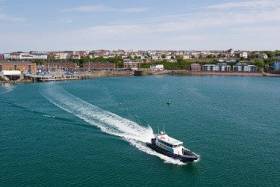Displaying items by tag: Visit Wales
#Ports&Shipping - Learn about the rich maritime heritage of the Milford Haven Waterway in south Wales in addition to surrounding towns that will be showcased during a unique event next week, on Thursday 26 July.
To celebrate Visit Wales’ ‘Year of the Sea’ a full itinerary has been planned to capture the beauty of the Haven and the history of Milford Haven and Pembroke Dock in Pembrokeshire.
The day will start at Milford Haven Museum, then passengers will board the ‘Discovery’ vessel to Hobbs Point where they will be collected and taken to the Pembroke Dock Heritage Centre for lunch. They will then have a chance to explore the centre, which is run by Pembroke Dock Sunderland Trust, and learn about the town’s naval history before enjoying a coracle making display from the Sea Scouts. Visitors will be transported back to Milford Haven by water later that afternoon.
Clare Stowell, Director of Property and Tourism at the Port of Milford Haven, said “We officially launched our new boat trips last month and they’ve proved to be really popular. We have offered photography and wildlife excursions over the past few weeks which have been fully booked, so now we’re running a heritage trip for people who are interested in our fantastic history.
“Following on from the recent signing of the collaboration agreement with The National Museum of the Royal Navy we are really excited about this – our first joint project with our museum and heritage partners. Working with Milford Haven Museum, the West Wales Maritime Heritage Society and Pembroke Dock Heritage Centre is perfect as they have a wealth of knowledge and tales to tell about the roles the towns played in years gone by through to the present day.”
The ‘Haven of Heritage’ guided trip takes place on Thursday 26th July between 10am-3.30pm. Places are limited so early booking is advisable.
For more details click website here or contact 01646 696370/ [email protected]





























































